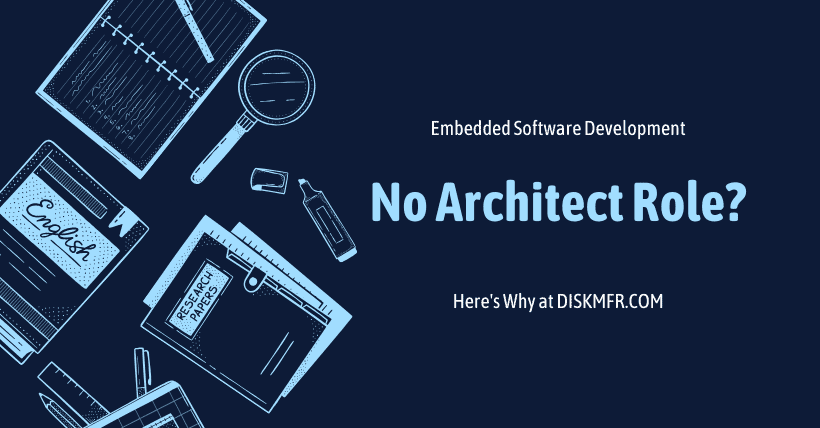In the field of pure internet software technology, it’s common to see major internet companies establish positions for “software architects,” who are responsible for system design, technology selection, and performance optimization. These roles often come with relatively high salaries.
However, in the field of embedded software technology, it’s rare to see companies hiring for a position titled “embedded software architect.” Is it because embedded software doesn’t require architectural design, and thus such roles are not established?
This article attempts to analyze the topic from the following three perspectives:
- What is an embedded software architect?
- Why is architectural thinking important in embedded software?
- How can embedded software engineers develop architectural thinking?
The aim is to help embedded engineers understand the importance of software architectural thinking and find ways to improve their own architectural capabilities.
01
What is an Embedded Software Architect?
As the name suggests, an architect is a role responsible for the overall architectural design of embedded software systems, selecting appropriate technologies, and solving critical issues—typically serving as a senior technical expert.
Although most companies don’t explicitly set up positions for embedded software architects, the architectural design work is usually undertaken by experienced embedded software engineers, technical leads, or systems engineers.
(1) What are the core responsibilities of an embedded software architect?
–System-level architectural design: Designing a reasonable software architecture based on hardware resources, ensuring the system meets key metrics like real-time performance, low power consumption, and high reliability. Establishing a modular and scalable code structure to reduce coupling between modules.
–Technology selection and standardization: Choosing an appropriate RTOS or bare-metal development model, formulating standards and interfaces for communication protocols, and evaluating the applicability and portability of third-party libraries.
–Performance optimization and reliability assurance: Optimizing memory usage, adjusting stack management and dynamic memory allocation strategies; designing watchdog mechanisms and error recovery strategies to enhance system stability; formulating OTA upgrade plans to ensure firmware maintainability.
(2) Embedded Software Architect vs. Internet Software Architect
From this comparison, we can see that embedded software architects focus more on adapting to low-level hardware and achieving optimal utilization of hardware resources through software design strategies.
02
Why is architectural thinking important in embedded software?
Although many embedded software projects are relatively small in scale, architectural thinking is still critically important during development. The following are several key reasons:
(1) Limited hardware resources require efficient utilization
Some embedded devices use low-power microcontroller chips, which typically have constrained memory and computing resources. Without good architectural design, the code may suffer from memory leaks, poor task scheduling, and tightly coupled peripheral drivers.
(2) Increasing system complexity
Early embedded devices had relatively simple functions, but modern embedded systems are becoming increasingly complex. They often require RTOS for multitasking, network protocol communication, and even AI inference. Without a clear modular architecture design, the code will become bloated and difficult to maintain.
(3) Maintainability determines product lifespan
Embedded devices often have long life cycles—industrial devices may last over 10 years. If the code architecture is messy, it becomes difficult to iterate on functionality, locate and fix bugs, or onboard new developers.
(4) “Software defines hardware” is becoming an industry trend
In the past, embedded software development was mainly led by hardware design, with software playing a supporting role. But now, more and more smart hardware products rely on software for differentiation. Good software architecture improves development efficiency, reduces hardware dependency, and enables faster product iteration.
03
How can embedded software engineers develop architectural thinking?
(1) Emphasize modular programming design
Follow the principle of high cohesion and low coupling, ensuring each module is responsible for a single function; use header files to encapsulate interfaces and hide implementation details; apply object-oriented principles to improve code reusability.
(2) Study excellent open-source code architectures
At minimum, learn how to use an RTOS, such as FreeRTOS, to understand task scheduling, memory management, and IPC mechanisms. Study device trees and driver models, and understand the design concepts behind Linux’s platform_device and platform_driver.
(3) Master architectural design tools
Make good use of architecture design tools: use UML to depict state diagrams that describe system behavior; use PlantUML to map out architectural evolution; and utilize static analysis tools such as PC-Lint or Cppcheck to identify potential architectural issues in software.
(4) Participate in full projects to gain design experience
Start from small-scale bare-metal MCU development and gradually transition to medium-sized RTOS projects. Try refactoring old code based on specific business logic and optimizing existing architectural designs. Stay updated on embedded technology trends and architectural directions in popular industries.
04
Conclusion
The responsibilities of an embedded software architect do exist, but due to the technical nature and industry characteristics of this field, the role is often filled by experienced developers. As modern embedded systems become increasingly complex, architectural thinking is becoming one of the core competencies of embedded software engineers.
For embedded software engineers, instead of waiting for companies to formally establish architect positions, it’s better to proactively cultivate system-level architectural thinking in real-world projects.
The overall development direction of embedded software will undoubtedly move toward higher efficiency, lower power consumption, stronger maintainability, and greater scalability—and solid architectural design is the key to achieving these goals!

Disclaimer:
- This channel does not make any representations or warranties regarding the availability, accuracy, timeliness, effectiveness, or completeness of any information posted. It hereby disclaims any liability or consequences arising from the use of the information.
- This channel is non-commercial and non-profit. The re-posted content does not signify endorsement of its views or responsibility for its authenticity. It does not intend to constitute any other guidance. This channel is not liable for any inaccuracies or errors in the re-posted or published information, directly or indirectly.
- Some data, materials, text, images, etc., used in this channel are sourced from the internet, and all reposts are duly credited to their sources. If you discover any work that infringes on your intellectual property rights or personal legal interests, please contact us, and we will promptly modify or remove it.








